A case brief is a legal document used to summarize a legal professional’s legal argument, the supporting facts, and the procedural history of a case.
The legal team often uses a brief for reference before trial in classroom discussions but can sometimes be submitted to the court.
Preparation is vital for legal professionals. It is one of the several documents legal professionals use to ensure they have all the information and argument needed before presenting their case. It helps summarize, analyze, integrate new information, and fine-tune the ideas presented during a case. As a result, brief is an analytical and narrative description of an actual case.
Briefs are an effective way to remember what has been learned and organize the established thoughts about a particular case. These briefs are used to help students apply the legal standards of torts, contracts, property, and criminal law to their own professional writing projects. Note that it is often for personal reference unless otherwise stated by the presiding party. A brief is occasionally referred to as a case summary or legal brief.
It should outline the parties involved, the citation, date, facts of the case, procedural history, legal issue, the holding, reasoning, and judgment. This article will discuss all these components, give tips on improving the quality and provide templates that you can download for free.
Free Templates
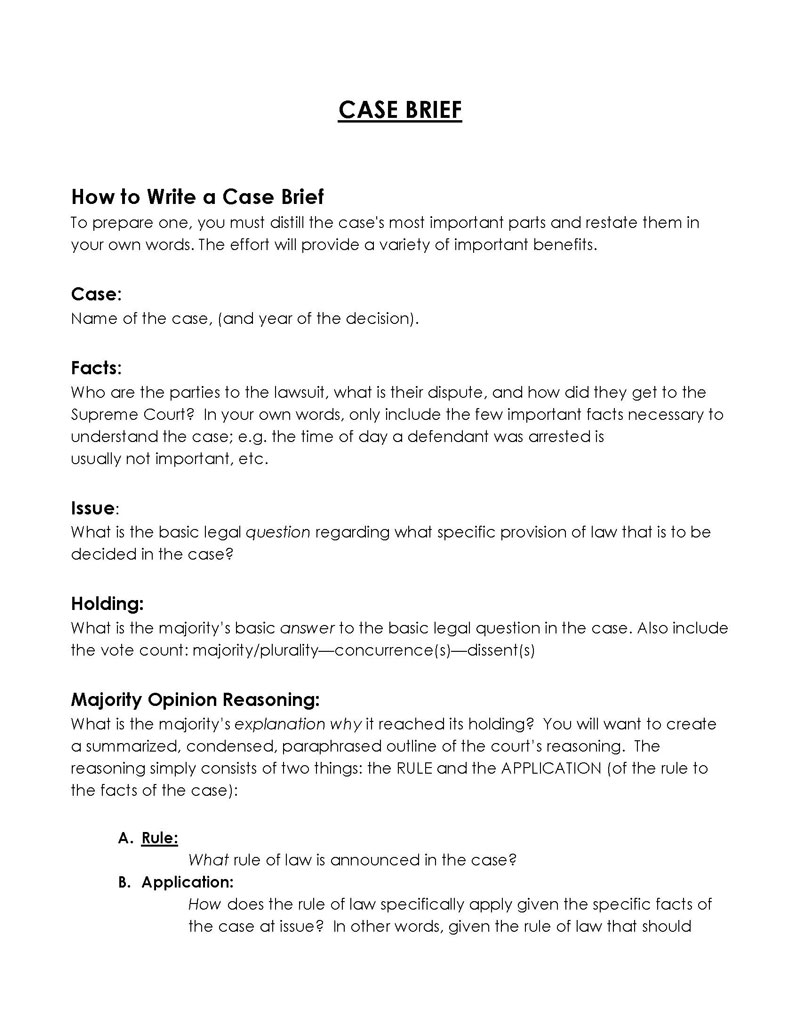
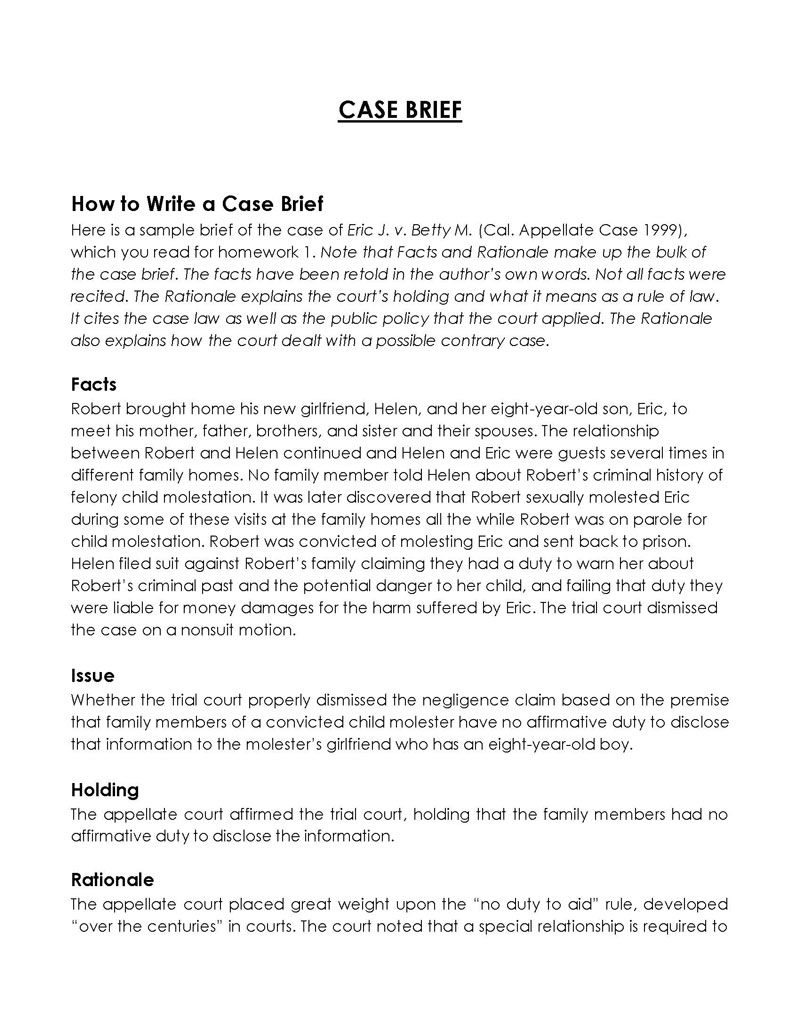
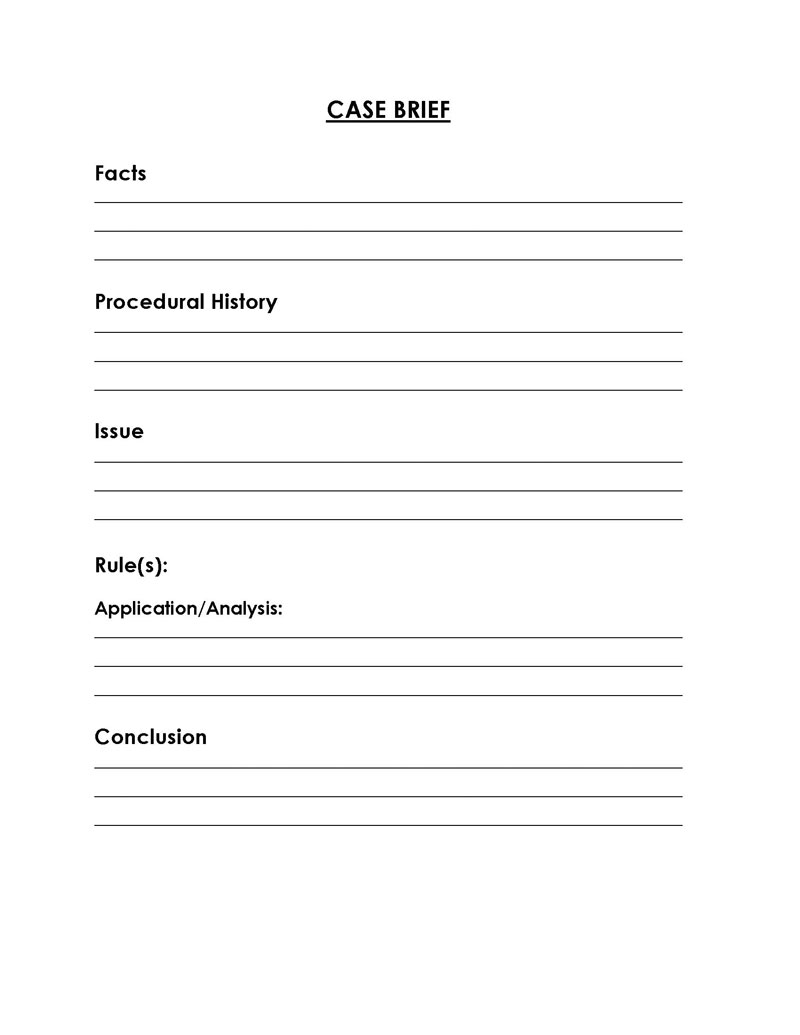
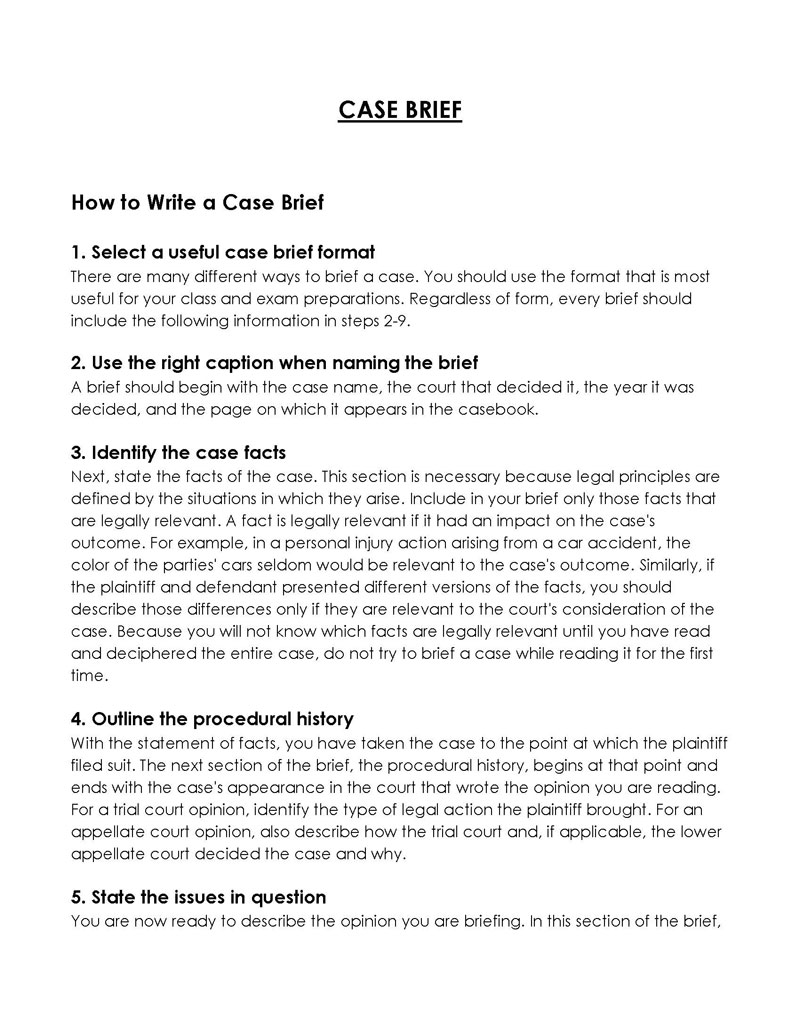
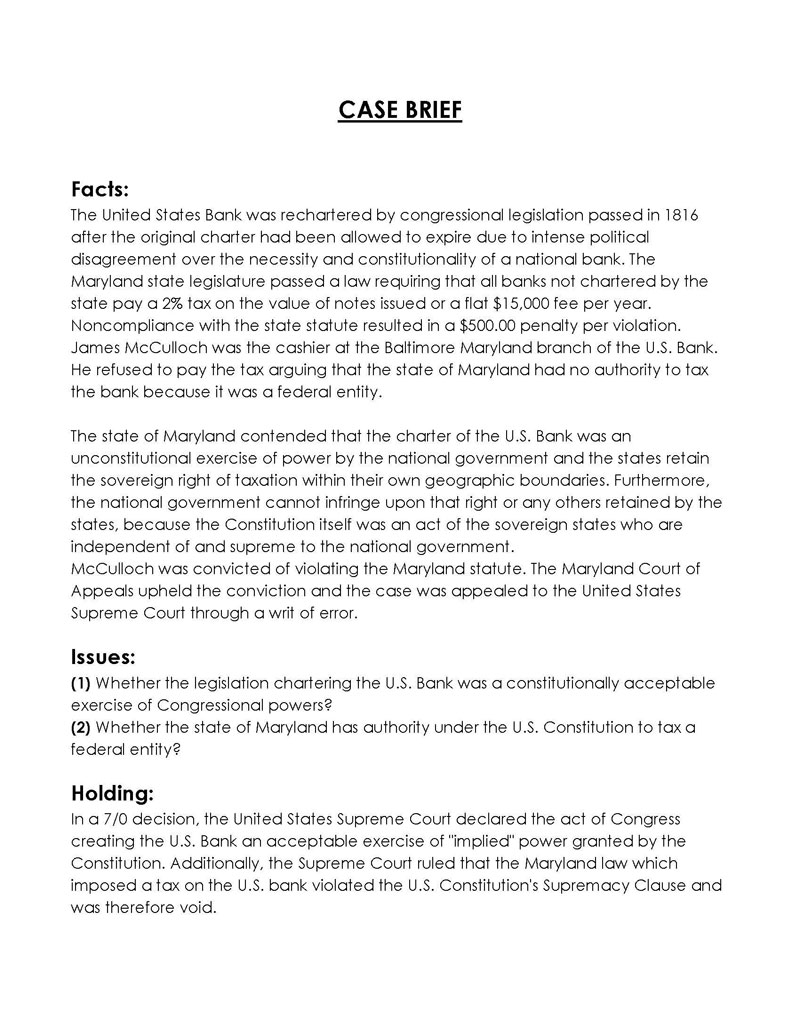
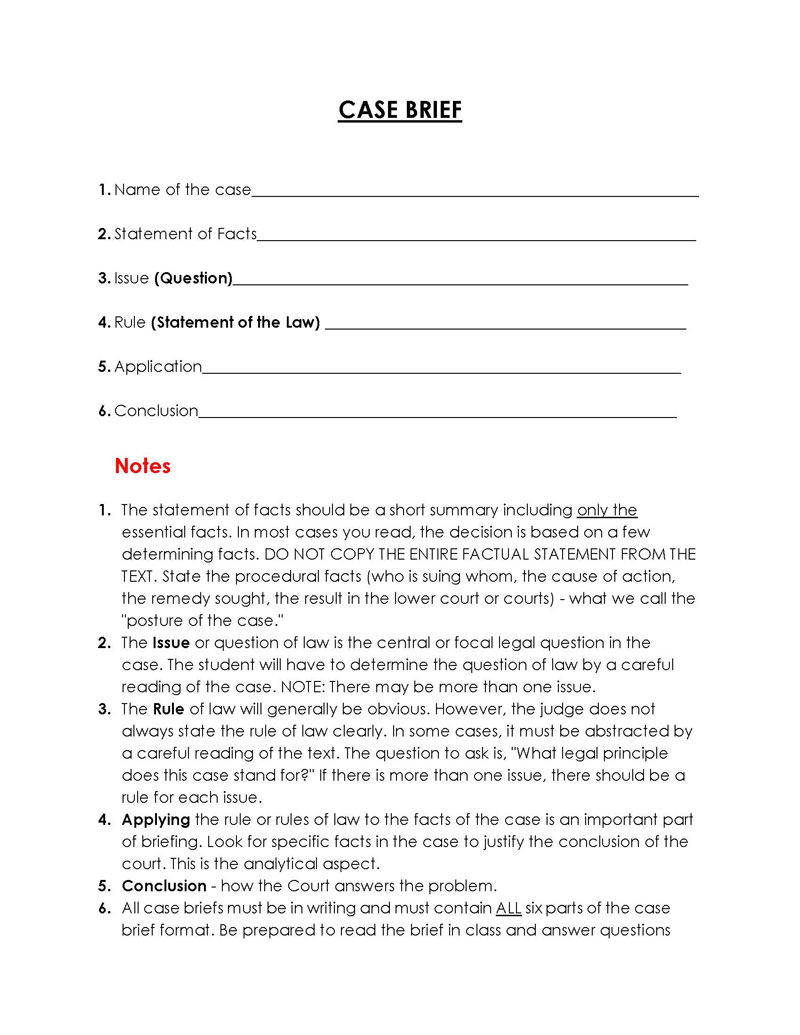
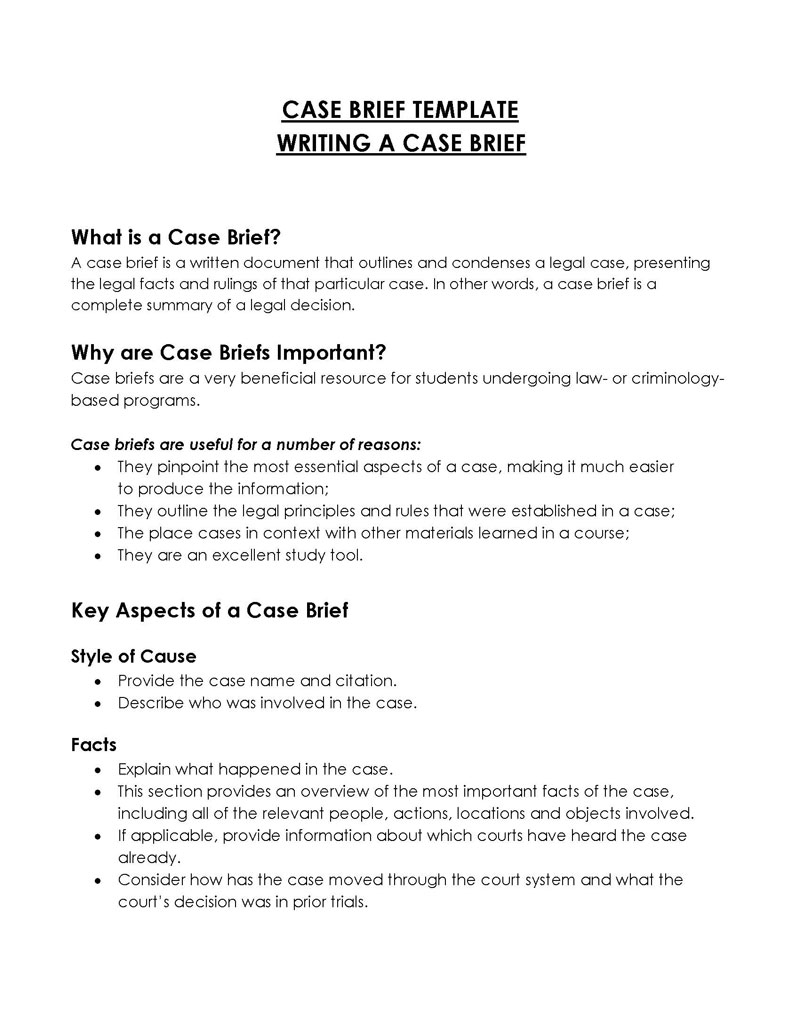
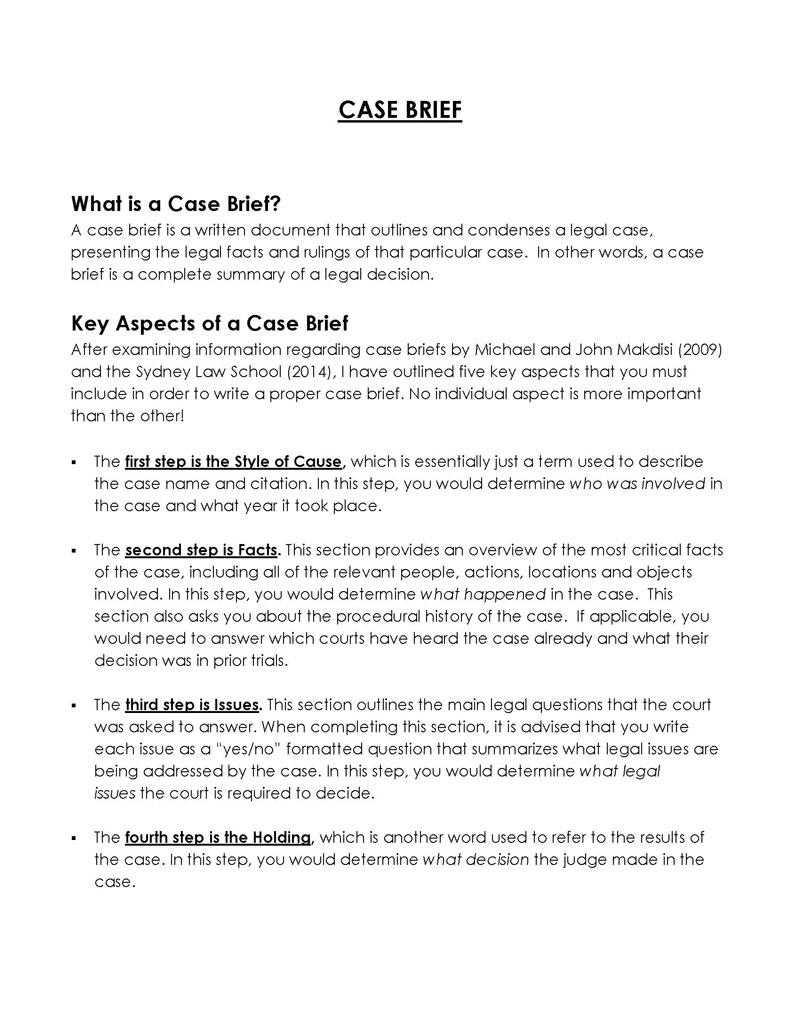
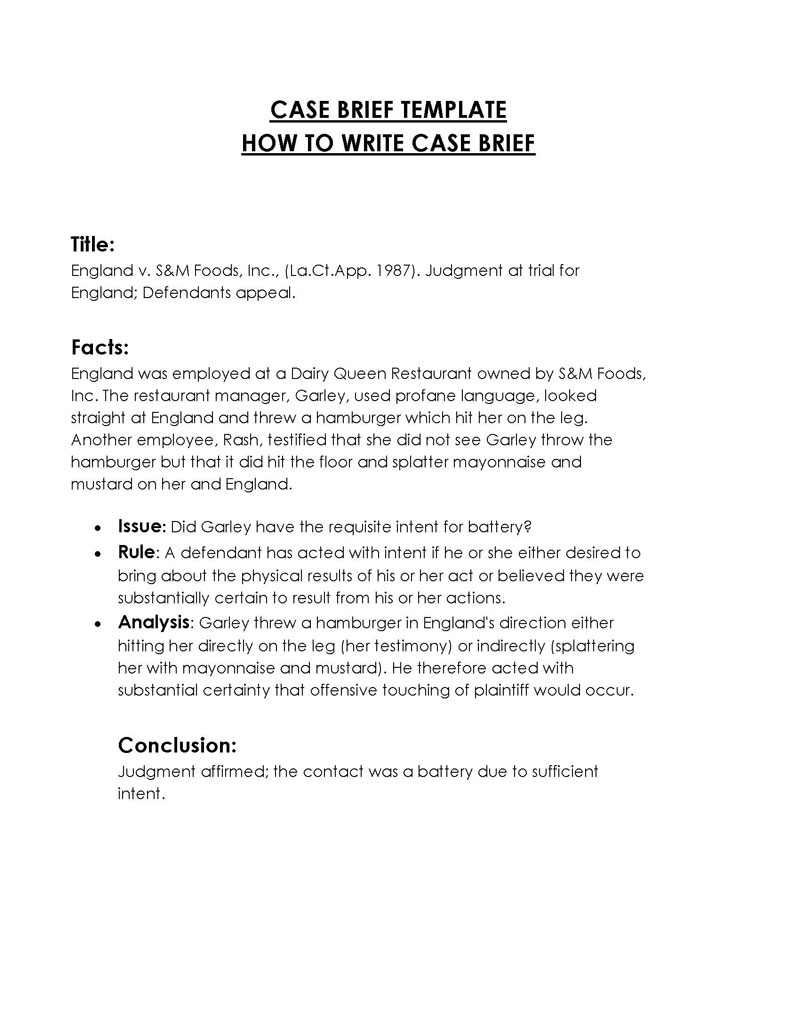
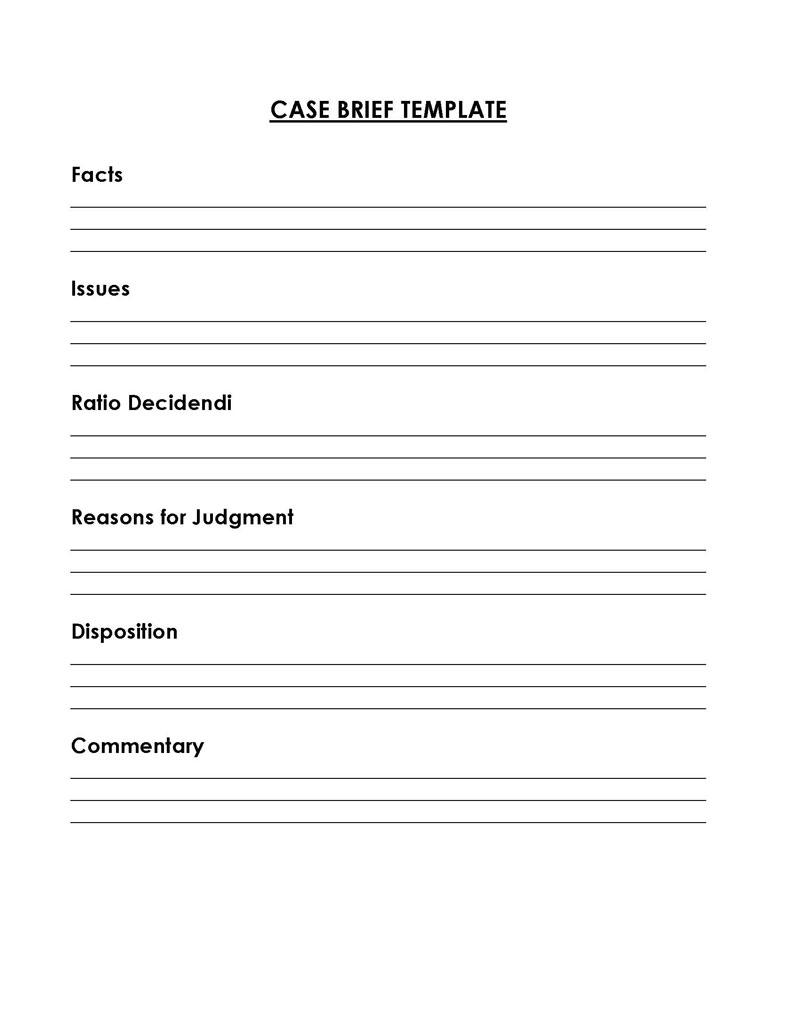
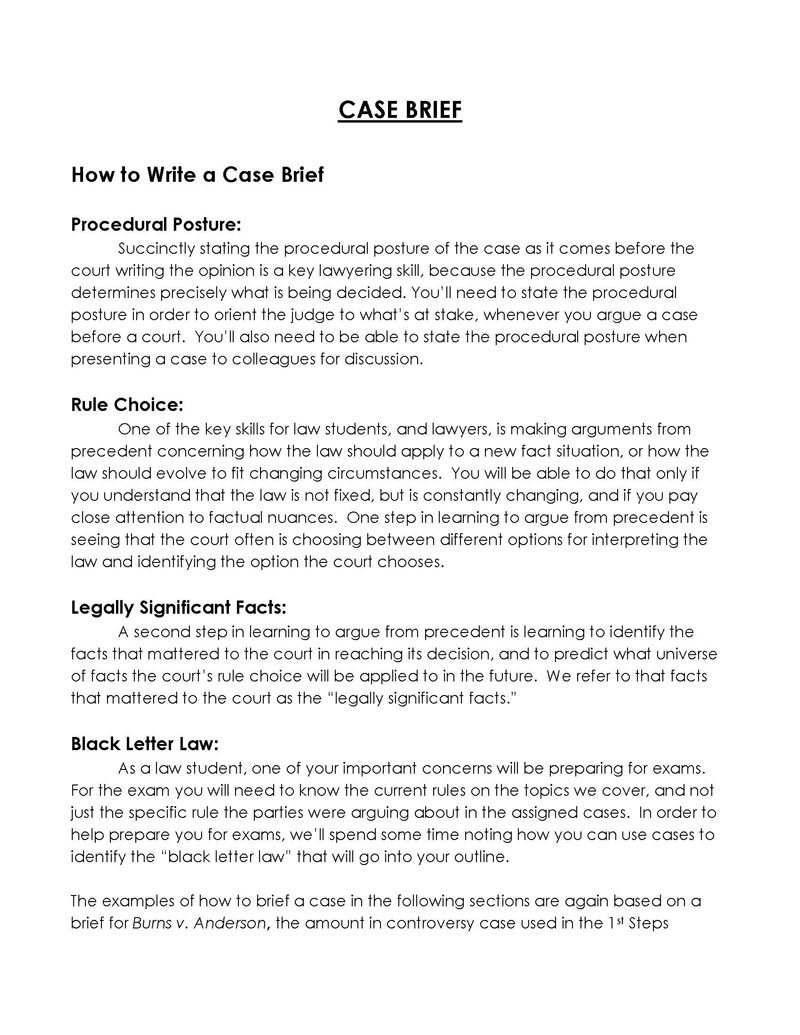
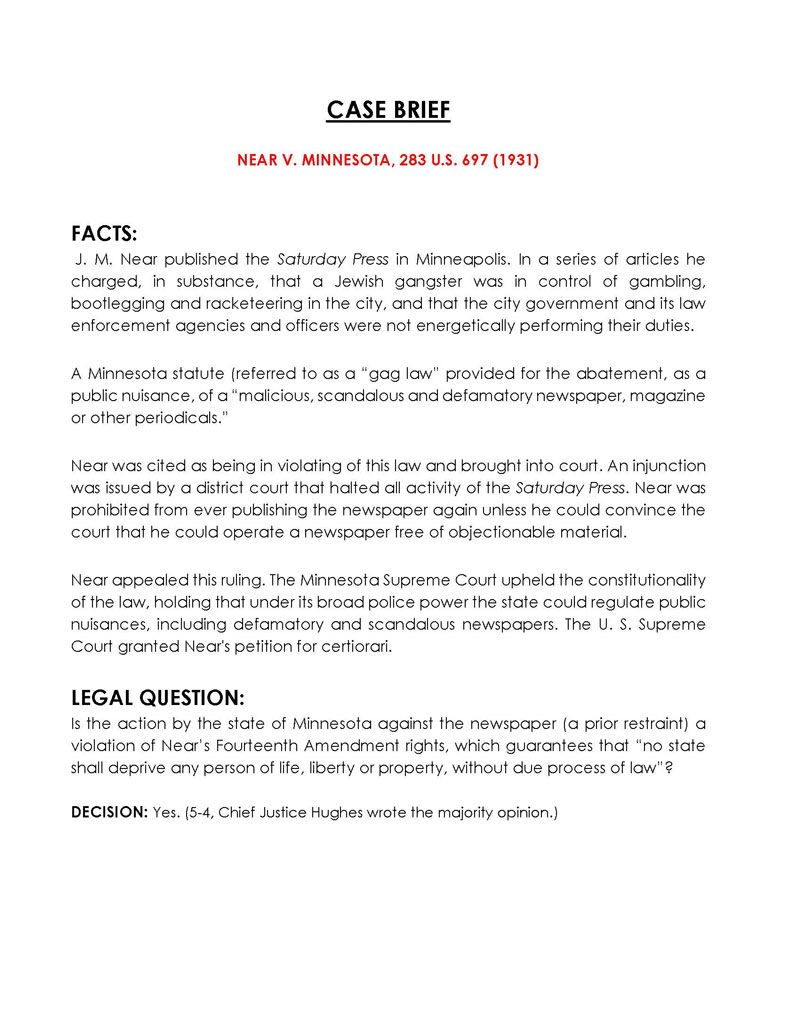
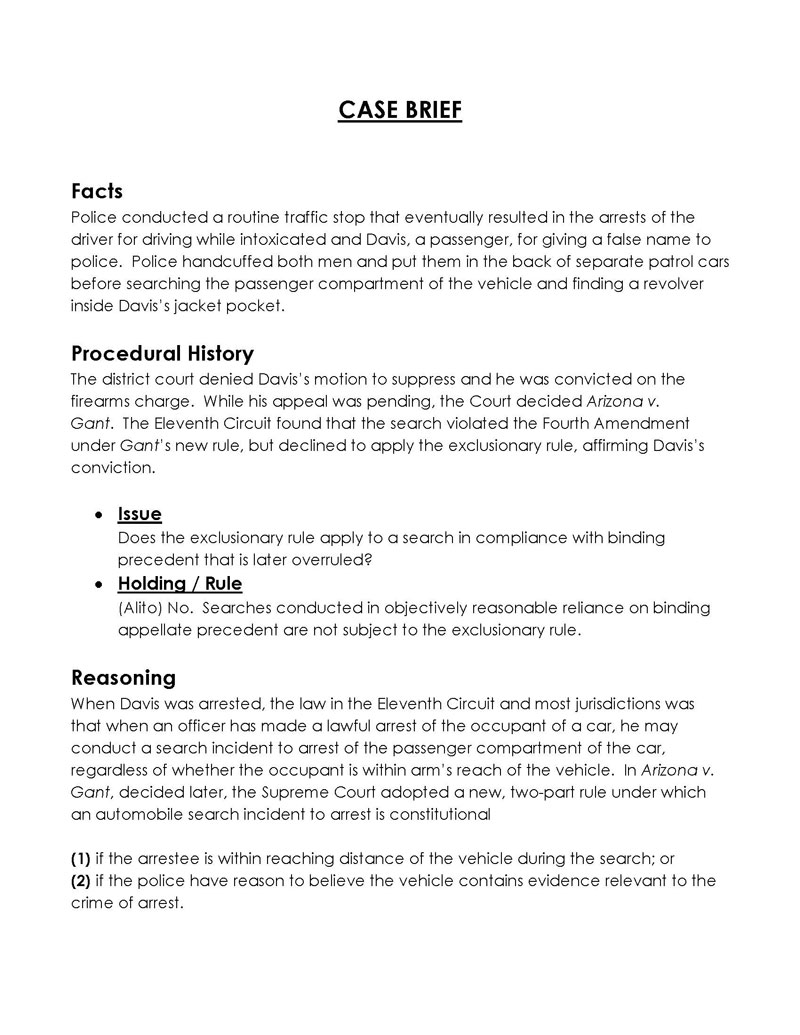
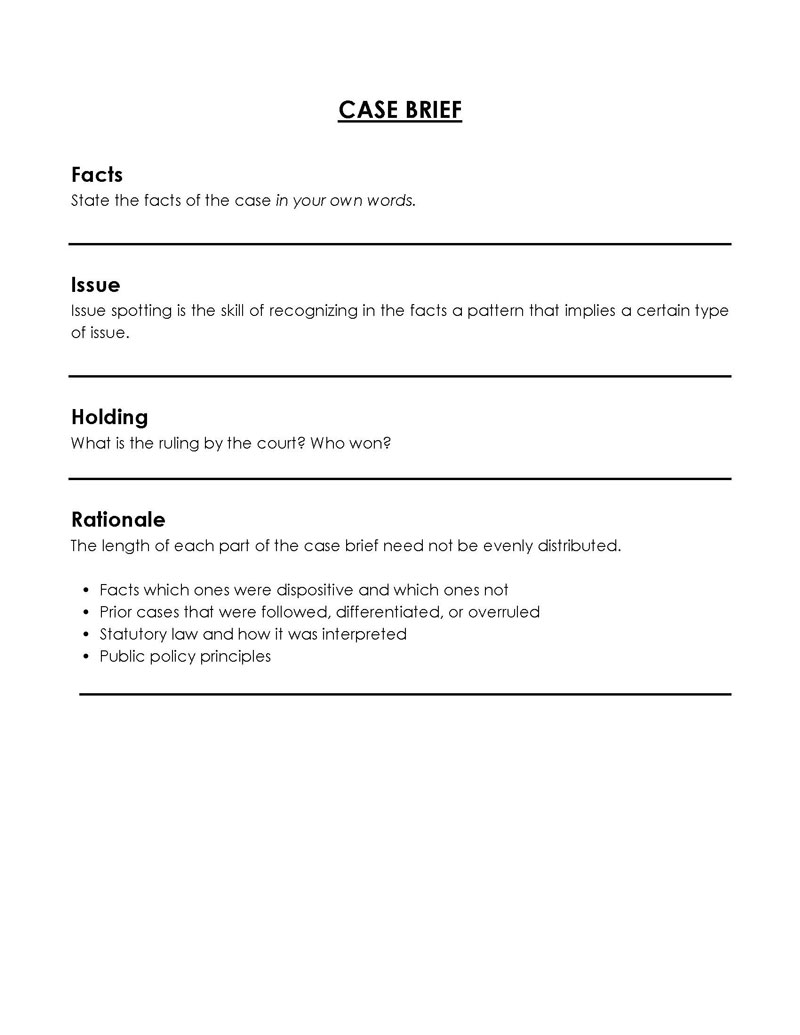
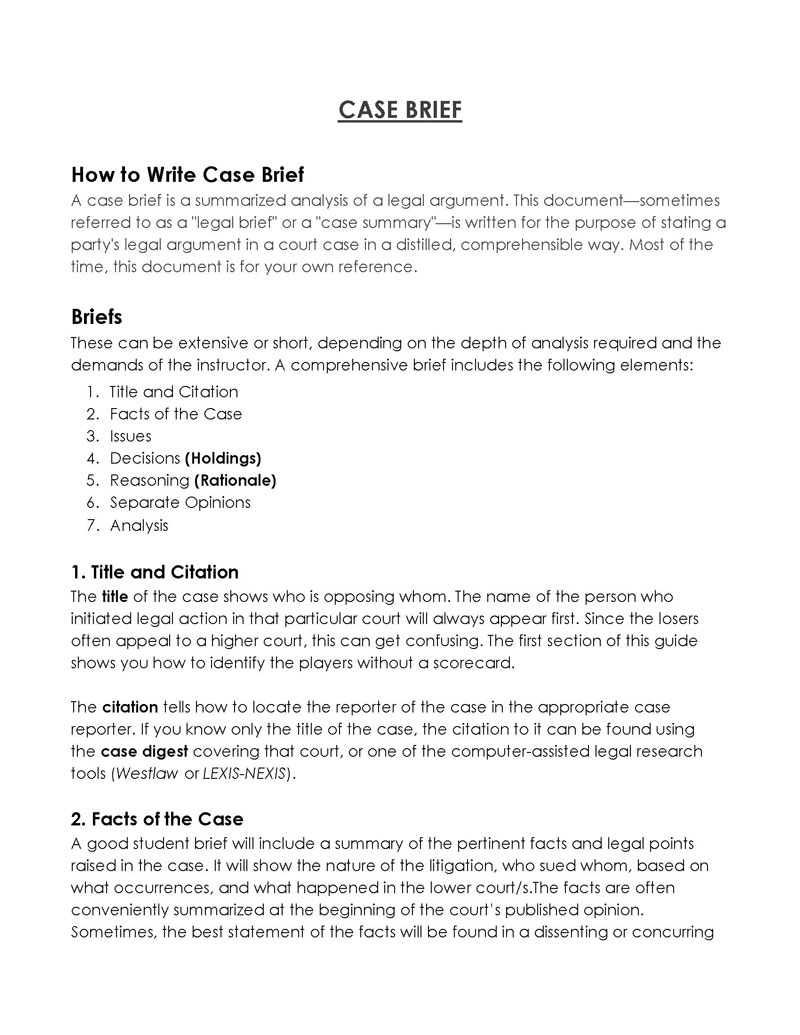
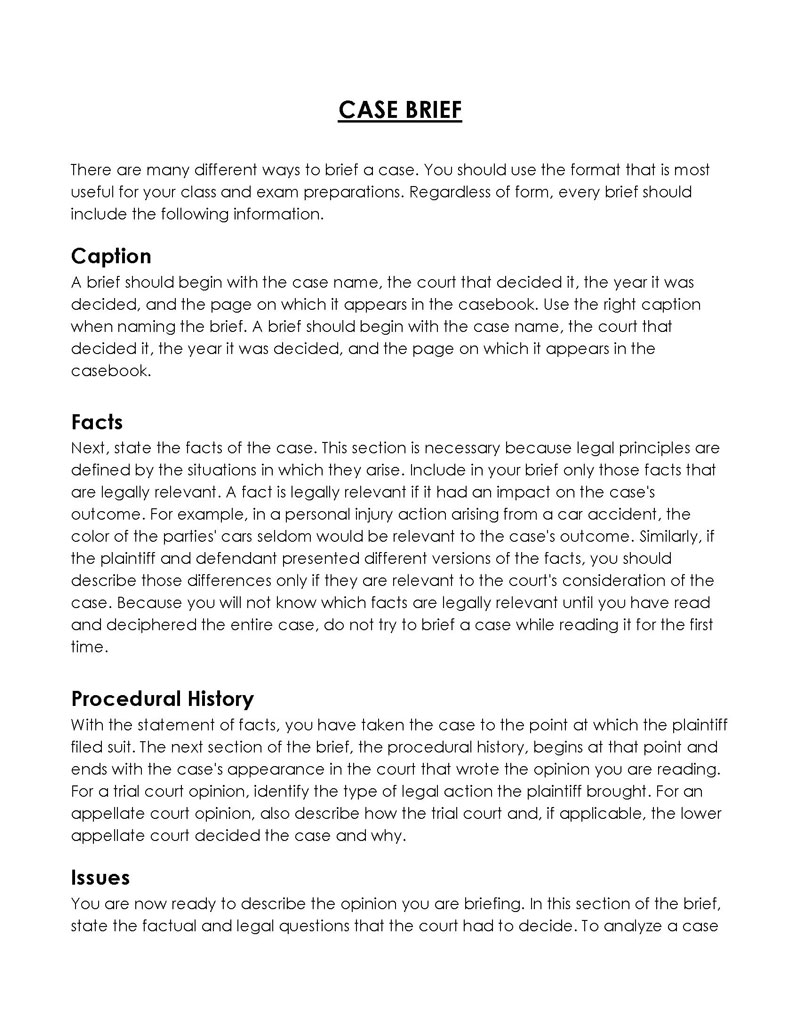
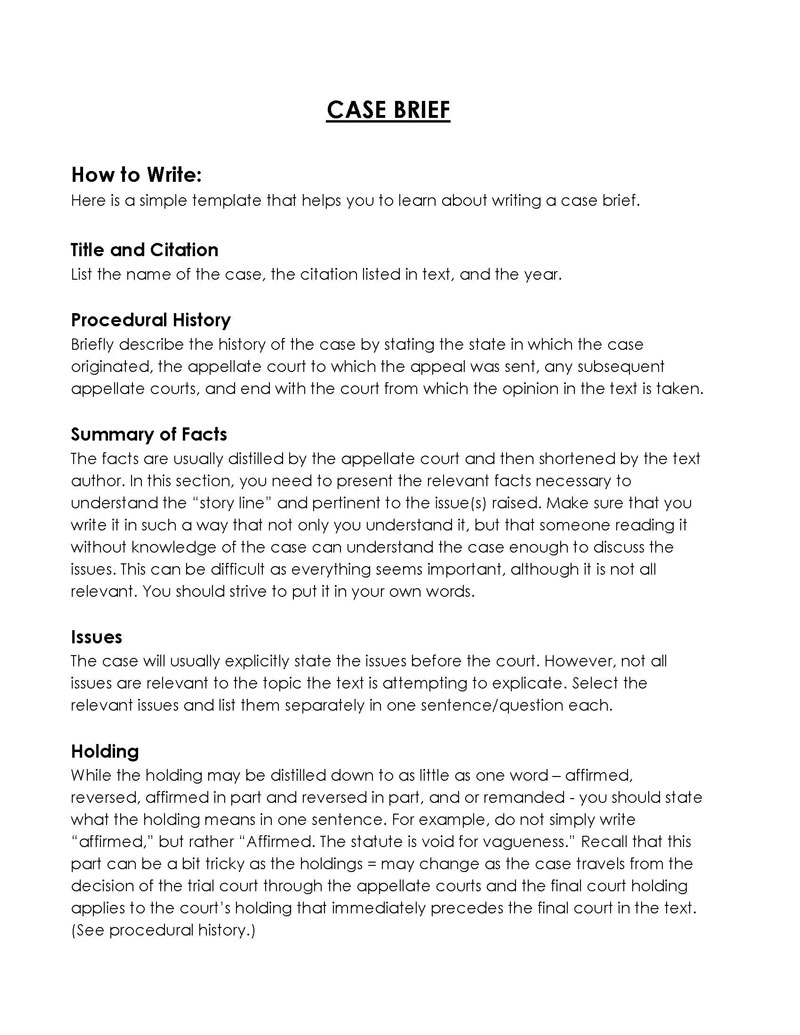
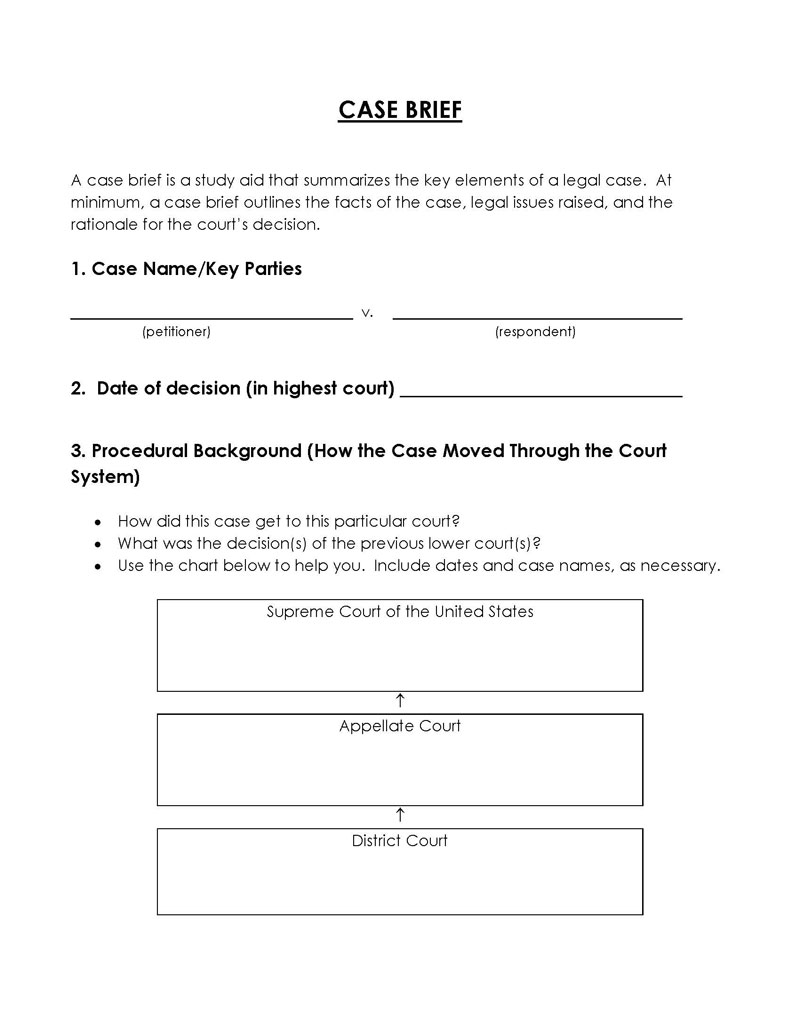
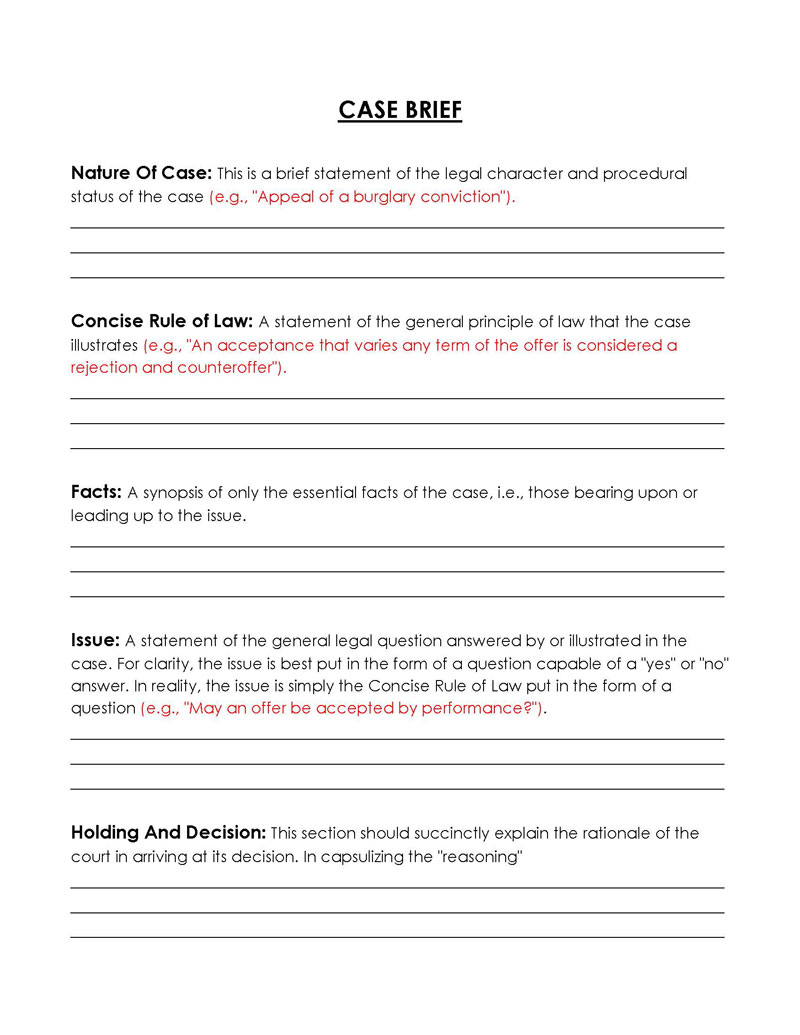
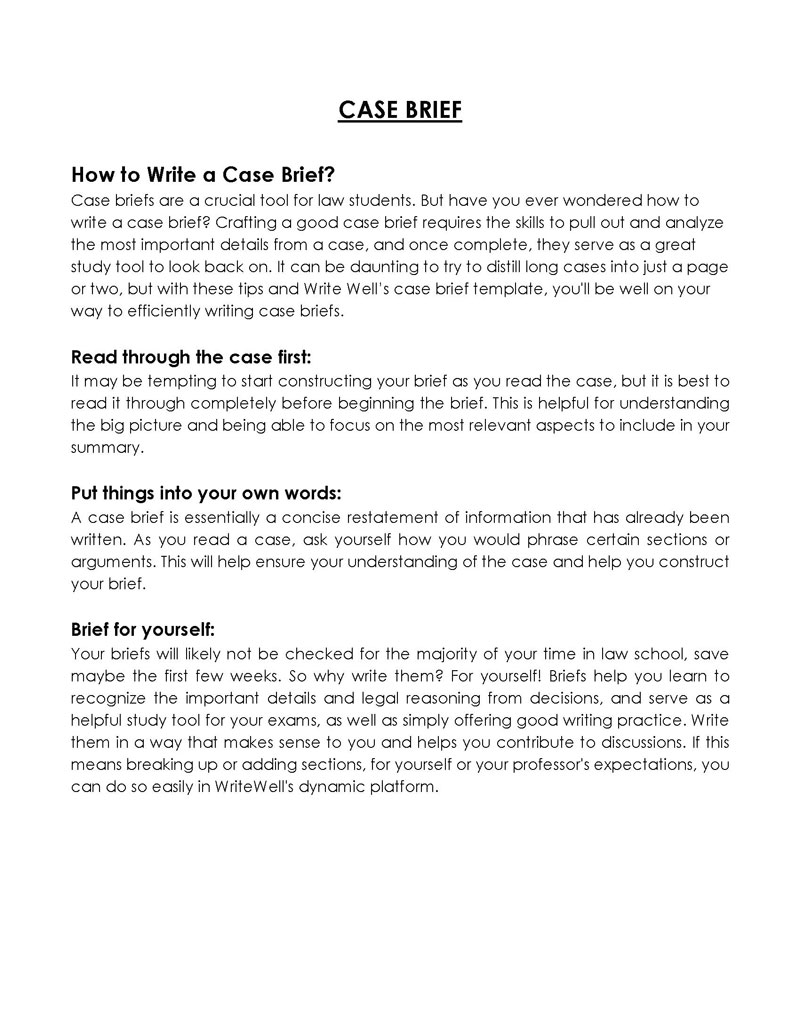
Related: 12 Free Project Brief Templates & Examples (Word | PDF)
Why are the Briefs Needed?
These are beneficial in different ways depending on where and how they are utilized. Firstly, it is a reliable reference tool that helps the user to recall all the facts or details about a case in a short time because the document puts all the relevant details of a case in one place. A brief also helps identify the principles of law that a case calls for, thus facilitating faster case proceedings, wherein a classroom discussion or court.
They equip law students with case analysis skills which are highly needed in the legal profession. Additionally, the author is able to lay out their argument in a succinct but organized manner such that there are no loopholes, thus resulting in an airtight case. This way, the legal professional or law student is better prepared when presenting their argument.
A brief can be used to reduce a complex and long case into the key facts, holdings, and rationale, thus speeding up presentations in class discussions, end-of-semester examinations, and legal proceedings. This aspect is also important in remaining organized since long, detailed documents consulted during research and investigations don’t have to be brought forth unless absolutely necessary. Instead, the relevant information or extract is presented.
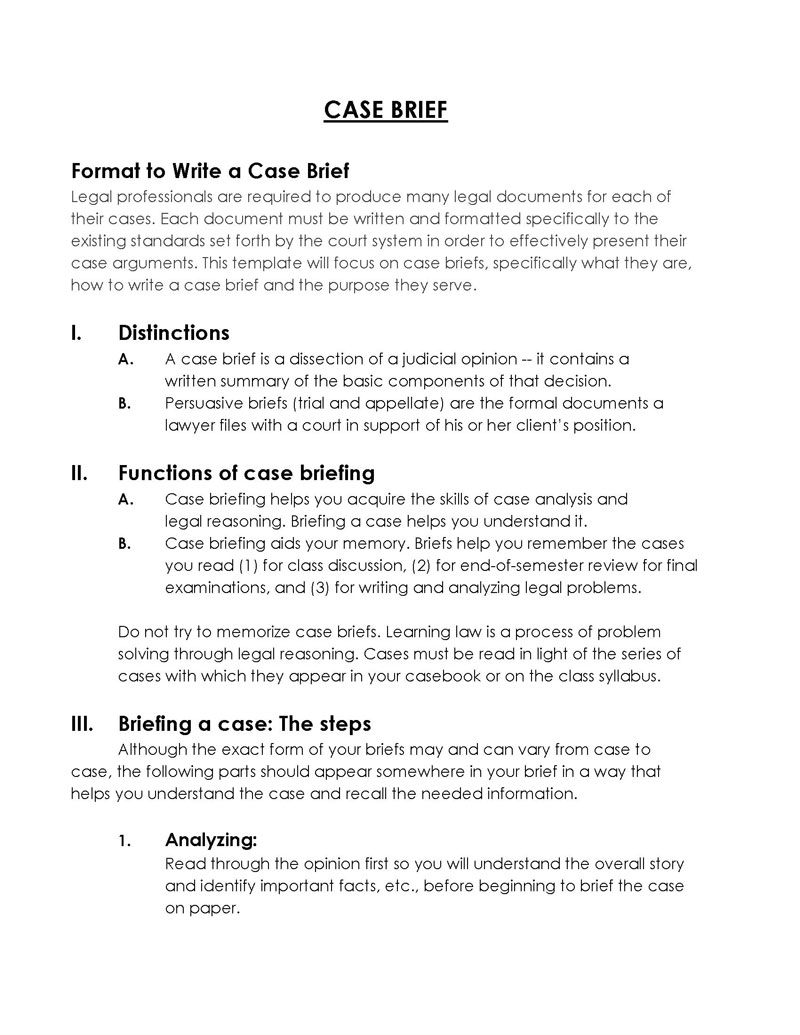
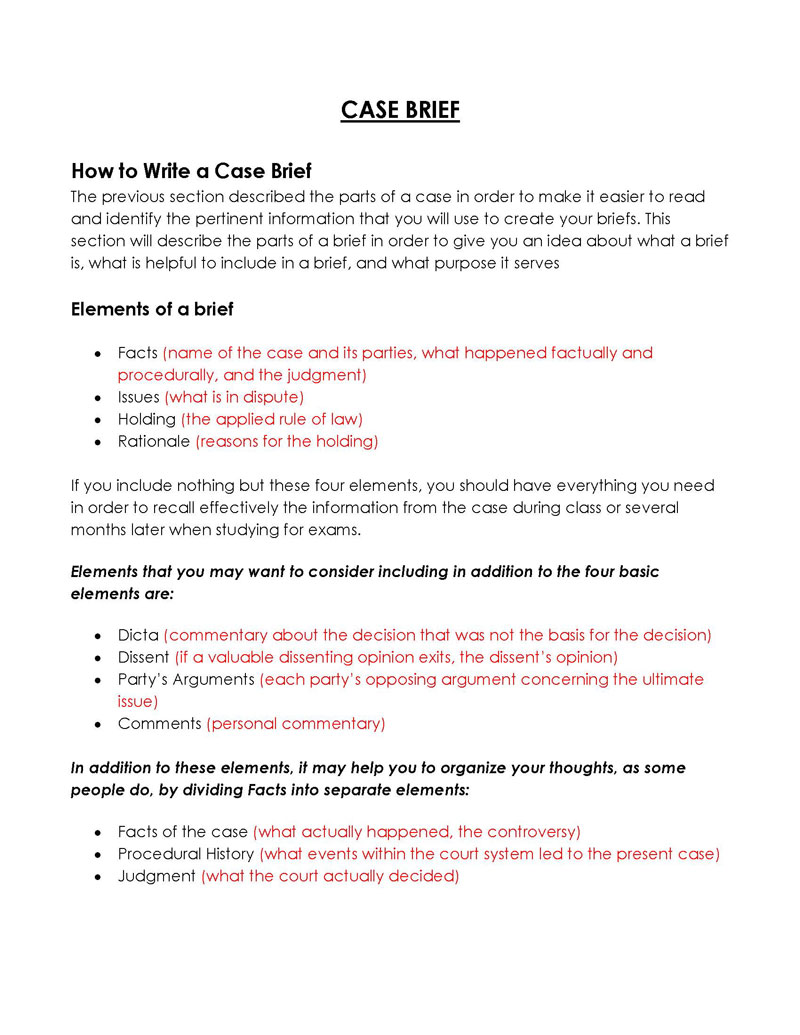
What to be Included?
Creating a case brief from scratch can be a complex and time-consuming task. Therefore, using a template is highly recommended. Templates will typically have blank sections of the essential components where the user is required to input the necessary information. This speeds up the process and ensures all the relevant information is captured.
Below are the components that ought to appear in a persuasive brief:
Heading
The template ought to have a section to provide the heading of the brief. The heading is the first place where information about the case is captured. The information to capture in the heading would vary depending on what the case covers. A case about a civil matter will have a different heading from one about a criminal matter. For example, in a civil case, the name of the court, county, judge, and other important data related to courts will be essential in this section.
Title, citation, and author
The next section should have the title, citation, and author of the case. The title is the text that provides a brief introduction to what the case is about and the parties involved (petitioner/plaintiff and defendant). The name of the plaintiff should come first. The citation will provide information on where more information about the case in question can be found. This can be in either a book, website, reporter, or some other significant resource that might have inspired the author to continue with the work or case.
Facts of the case
Next, the facts ought to be captured. Any fact written in this section must be legally viable – that is must have an impact on the outcome of the case. This information should be captured as follows:
- Cause of action: There should be a section where you can write why the case is being filed. This can either be a general cause of action (e.g., for assault and battery, fraud, etc.) or a specific one (i.e., “assault and battery occurring on April 12, 2018, in City of Boston, Massachusetts state court case number 2019-001 upon plaintiff Samuel Brown”).
- Statement of the relevant law: These are the laws that are supposed to govern any case that is related to the brief. For example, if one is arguing against a car accident, he or she has to demonstrate that there was no negligence on the part of the driver. The rule of law should be presented in a single sentence but can sometimes be a list of laws that relate to the case and need to be followed by the arbitrator.
- Identification of the opposing parties: This section should state the names of the parties involved. Besides the parties’ names, it would be wise to include their addresses and their relationship to the case—for example, employer and employee, buyer and seller, etc.
- Complaint: This section captures the essence of what happened when who did it and why they did it. This should be stated in chronological order. This section is used to capture the relevant arguments made by the parties involved. This would consist of facts supporting their claims and arguments as to why they are right or wrong (their statement of reasons).
Court holdings
This section captures the decisions made by other legal authorities, such as lower courts, regarding the case in response to the facts presented. It is basically a summary of prior actions or procedural history. It would be wise to include both favorable and unfavorable decisions made.
It is advised that these facts should be condensed in this section as they will impact how relevant material will be called upon later.
Procedural history
This section captures the aspects of the case that are procedural in nature, such as the history in the legal domain, for example, in lower cases. The procedural history would include such things as where and when the case was decided, what issue was decided, who decided and how it was decided. It can also indicate who appealed for it and the applicable reasons.
Legal issue
A section should address the legal issue at hand. This includes the facts and the questions raised as a consequence. The question(s) should be presented as a “yes” or “no” question(s). Legal issues can be either;
Substantive issues
These are the legal issues that will have an impact on the case. These are questions about the law and do not affect whether it should be decided in favor of one party or another. A substantive issue will typically consist of two segments; the core point of law in question and the facts that relate to that point of law.
Procedural issue
These are issues relating to procedure (i.e., ruling on evidence, who should serve documents, how a claim should be filed, etc.). The questions thus do not involve the parties themselves but are related to how the case is or was handled by lower courts as opposed to looking at the issue itself.
Judgment
The template should contain a section concerning the judgment – the court’s final decision or response to claims. The judgment will typically explain why the arbitrator or some other legal authority made the decisions that they did. This section would also include initial statements about whether one party was successful on all or some of their claims and whether the opposing party was successful.
Holding
The holding section should include the reasons why the arbitrator or legal authority decided as they did. This involves explaining the decision-making process of how the legal issue arose and how it was settled. The decision(s) of a higher court would also be included. Depending on how the legal issue was framed, the statement will either be positive (yes) or negative (no). This section is formatted using the CREAC (conclusion, rule, explanation, application, and conclusion) structure or the IRAC (issue, rule, application, and conclusion) structure.
The rule of law
The last section will be the rule of law. This includes the applicable rules, statute, regulation, rule, common law, and principles that were considered, applied, or relied upon. This is generally a paragraph, and it should include whether there was a majority or minority view.
Reasoning
The rationale section includes the factual basis of why the decision was reached. This is where the arbitrator or legal authorities go into as much detail as possible to explain why they came up with their decision. This section also explains why that particular precedent or rule should be followed. The reasoning section gives weight to why that rule is applicable in this case and how it was applied.
Concurrences and dissents
A section should be included to capture any concurrences or dissents emanating from the case. This is because the legal authority may or may not agree with the decision, which may be concurrent or in dissent to the majority’s reasoning or opinion. This section should also capture the reasons for concurrence or dissent.
Additional comments/personal impressions
This section is the final section of the template. It will include a quick recap of the essential facts that the author agrees or disagrees with. The potential social, economic, and political impacts of the decision can be noted in this section.
Tips to be Followed
The following tips should be considered:
Read through the opinion first
It is much easier to create a brief using the actual facts. Pick out the relevant facts before beginning the writing process.
Keep it brief
Remember, the purpose is to present only what is relevant and important. This is why it is unnecessary to include every statement made by an opposing party or every argument they had. It may be necessary to mention the names of the opposing parties, but there is no need to state everything they said. It is not meant to be a long essay.
Use active voice
Remember that the active voice is preferred in business and legal writing. This will be more readable and keep the author from having to change their voice depending on who they are writing to. Therefore, do not write using passive voice in your brief.
Language
Language is very imperative in law. Use the proper language; for example, minimize the use of pronouns – avoid using the word “they”. You can always use a phrase like “the court held” instead of “they held.” Also, always use simple and easy language to understand (layman’s terms) as much as possible. Be observant when using nominalization (use of verbs as nouns) and use the correct homophones.
Choose the right format
Many different types of formats can be used. The format used can depend on preference and the purpose. Select the template format that is most useful in the specific case.
Proofread
Proofread and check for spelling errors and grammar mistakes. Running a spell check can be done using a spell checker to ensure that all the words are spelled correctly.
Frequently Asked Questions
A law student or legal professional can prepare for writing a brief by reviewing the opinion and casebook excerpt and identifying and highlighting/selecting the most important facts to discuss. This way, they are well-informed and equipped to make their argument.
Case briefs should be long enough to provide relevant information but should not contain too much fluff. 600 words without concurrences and dissents are usually enough to serve this purpose.
Anyone can write it. However, all legal cases are decided on facts, and it is thus advisable that the author have at least some knowledge about law or the courts before attempting to write it. As a result, these are popular among law students, lawyers, and other legal professionals.




